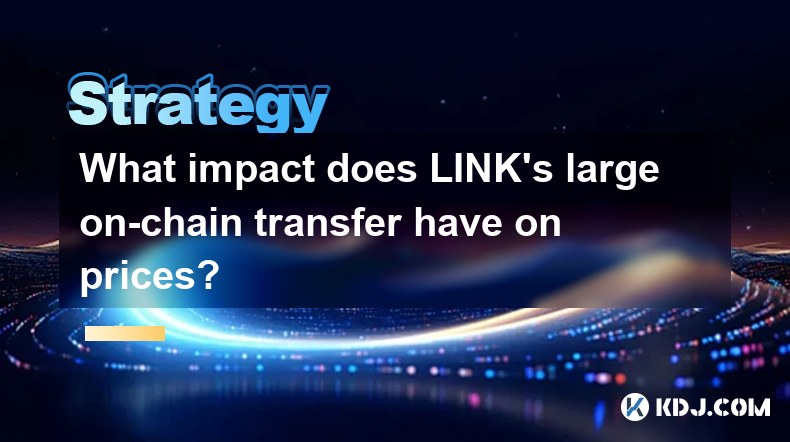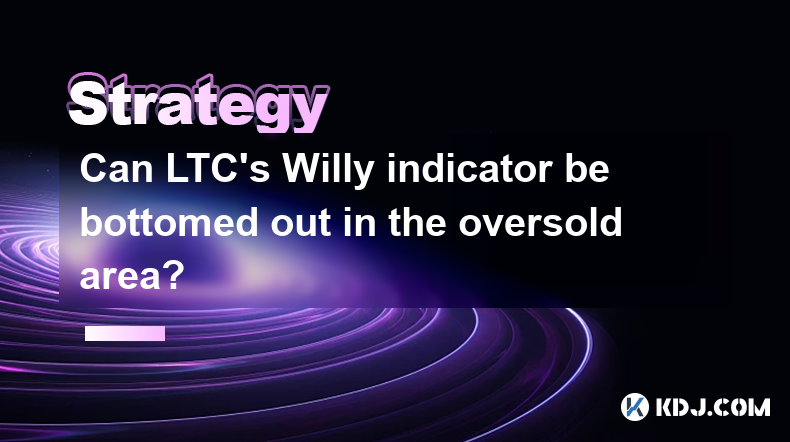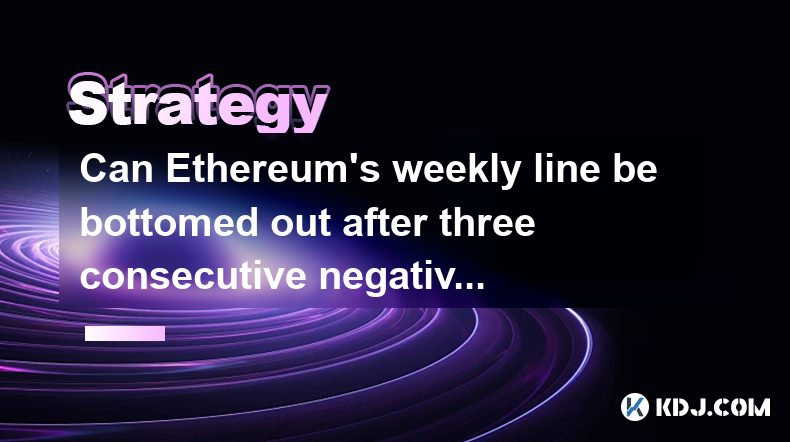-
 Bitcoin
Bitcoin $92,791.8043
-1.35% -
 Ethereum
Ethereum $1,755.1542
-3.41% -
 Tether USDt
Tether USDt $1.0002
-0.01% -
 XRP
XRP $2.1670
-5.40% -
 BNB
BNB $597.8018
-2.59% -
 Solana
Solana $148.6654
-3.10% -
 USDC
USDC $1.0000
0.00% -
 Dogecoin
Dogecoin $0.1741
-5.86% -
 Cardano
Cardano $0.6943
-2.44% -
 TRON
TRON $0.2457
-0.42% -
 Sui
Sui $3.0286
2.61% -
 Chainlink
Chainlink $14.4764
-4.73% -
 Avalanche
Avalanche $22.0152
-4.12% -
 UNUS SED LEO
UNUS SED LEO $9.2234
2.05% -
 Stellar
Stellar $0.2687
-2.01% -
 Toncoin
Toncoin $3.1166
-0.77% -
 Shiba Inu
Shiba Inu $0.0...01320
-3.99% -
 Hedera
Hedera $0.1818
-3.34% -
 Bitcoin Cash
Bitcoin Cash $347.4785
-3.75% -
 Polkadot
Polkadot $4.0211
-3.26% -
 Litecoin
Litecoin $81.4299
-4.20% -
 Hyperliquid
Hyperliquid $17.9559
-5.59% -
 Dai
Dai $1.0000
-0.01% -
 Bitget Token
Bitget Token $4.3936
-4.77% -
 Ethena USDe
Ethena USDe $0.9992
-0.02% -
 Pi
Pi $0.6496
-3.57% -
 Monero
Monero $224.5697
-2.17% -
 Uniswap
Uniswap $5.7648
-4.97% -
 Pepe
Pepe $0.0...08565
-7.33% -
 Aptos
Aptos $5.3125
-1.27%
What impact does LINK's large on-chain transfer have on prices?
Large on-chain transfers of LINK can signal potential price movements, influenced by market sentiment and the actions of whales, impacting the cryptocurrency's value.
Apr 24, 2025 at 12:49 pm

The cryptocurrency market is often influenced by various factors, including large on-chain transfers. When it comes to Chainlink (LINK), a decentralized oracle network, significant on-chain movements can indeed have an impact on its price. Understanding this relationship requires delving into the mechanics of on-chain transfers, market sentiment, and the broader context of LINK's ecosystem.
Understanding On-Chain Transfers
On-chain transfers refer to the movement of cryptocurrencies from one wallet to another within a blockchain network. For LINK, these transfers can involve large amounts of tokens being moved between exchanges, cold storage, or other wallets. When a large transfer occurs, it often catches the attention of market participants and can lead to speculation about the intentions behind the move.
The Mechanics of Large Transfers
A large on-chain transfer of LINK can signal several things to the market. If the tokens are moved from a cold storage wallet to an exchange, it might suggest that the holder is preparing to sell, which could put downward pressure on the price. Conversely, if the tokens are moved from an exchange to a cold storage wallet, it might indicate a long-term holding strategy, potentially leading to a positive impact on the price due to reduced selling pressure.
Market Sentiment and Speculation
Market sentiment plays a crucial role in how large on-chain transfers affect LINK's price. If the transfer is perceived as a sign of an impending sell-off, it can lead to a bearish sentiment, causing the price to drop. On the other hand, if the market interprets the transfer as a sign of confidence in LINK's future, it can lead to a bullish sentiment and a potential price increase.
Speculation is also a significant factor. Traders and investors often use on-chain data to make predictions about future price movements. When a large transfer is detected, it can lead to increased trading volume as market participants adjust their positions based on their interpretation of the transfer.
Historical Examples of Large Transfers
To better understand the impact of large on-chain transfers on LINK's price, it's helpful to look at historical examples. For instance, if a large transfer of LINK from a known whale's wallet to an exchange was followed by a significant price drop, it would suggest that the market interpreted the transfer as a sell signal. Conversely, if a similar transfer to a cold storage wallet was followed by a price increase, it would indicate a positive market reaction.
The Role of Whales
Whales, or large holders of LINK, can significantly influence the market through their on-chain activities. When a whale moves a large amount of LINK, it can create a ripple effect throughout the market. If the whale is seen as a key player or influencer within the LINK community, their actions can carry even more weight.
For example, if a whale known for their long-term investment strategy moves a large amount of LINK to a cold storage wallet, it might be interpreted as a vote of confidence in LINK's future, potentially leading to a price increase. Conversely, if a whale known for short-term trading moves a large amount of LINK to an exchange, it might be seen as a signal to sell, leading to a price decrease.
The Impact of Exchange Flows
The flow of LINK to and from exchanges is another critical factor to consider. When large amounts of LINK are moved to exchanges, it can increase the available supply on the market, potentially leading to a price drop if the market perceives this as a sign of increased selling pressure. Conversely, if large amounts of LINK are moved away from exchanges, it can reduce the available supply, potentially leading to a price increase if the market interprets this as a sign of reduced selling pressure.
Analyzing On-Chain Data
To accurately assess the impact of large on-chain transfers on LINK's price, it's essential to analyze on-chain data. Tools like blockchain explorers and on-chain analytics platforms can provide valuable insights into the movement of LINK tokens. By examining the source and destination of large transfers, as well as the timing and frequency of these movements, market participants can gain a better understanding of the potential impact on LINK's price.
The Broader Context of LINK's Ecosystem
Finally, it's important to consider the broader context of LINK's ecosystem when evaluating the impact of large on-chain transfers. Factors such as network growth, adoption by developers, and partnerships can all influence how the market reacts to large transfers. If LINK is experiencing strong growth and adoption, the market may be more resilient to large transfers, as the overall sentiment remains positive. Conversely, if LINK is facing challenges or negative news, large transfers may have a more significant impact on the price.
Frequently Asked Questions
Q: How can I track large on-chain transfers of LINK?
- You can use blockchain explorers like Etherscan to track LINK transfers. Simply search for the LINK token and look for large transactions in the transaction history.
- On-chain analytics platforms like Nansen or Glassnode also provide detailed insights into large transfers and wallet movements.
Q: Are there any tools that can help predict the impact of large LINK transfers on the price?
- While no tool can predict the market with certainty, on-chain analytics platforms like Santiment or CryptoQuant offer metrics and indicators that can help assess the potential impact of large transfers.
- These platforms often provide sentiment analysis, whale tracking, and exchange flow data, which can be useful in making informed predictions.
Q: How can I protect my LINK investments from the volatility caused by large on-chain transfers?
- Diversifying your portfolio can help mitigate the impact of volatility caused by large transfers.
- Setting stop-loss orders can help limit potential losses if the price drops significantly due to a large transfer.
- Staying informed about on-chain activities and market sentiment can also help you make more informed decisions about when to buy or sell LINK.
Q: Can small investors influence the market in the same way as whales with large on-chain transfers?
- Generally, small investors have less influence on the market compared to whales due to the smaller size of their transactions.
- However, if many small investors act in unison, such as during a coordinated buying or selling event, they can collectively impact the market.
- The influence of small investors is more likely to be seen in the context of broader market trends rather than individual large transfers.
Disclaimer:info@kdj.com
The information provided is not trading advice. kdj.com does not assume any responsibility for any investments made based on the information provided in this article. Cryptocurrencies are highly volatile and it is highly recommended that you invest with caution after thorough research!
If you believe that the content used on this website infringes your copyright, please contact us immediately (info@kdj.com) and we will delete it promptly.
- After Years of "PUA", Zora Finally Issued a Coin, but the Community Users Did Not Get the "Big Result" They Wished For
- 2025-04-24 21:20:11
- Bitcoin (BTC) Has Exceeded the Realized Price of Short-term Holders, Exciting Analysts
- 2025-04-24 21:20:11
- PEPE Price Surge Re-enters the Crypto Spotlight with a 17% Breakout
- 2025-04-24 21:15:12
- US President Donald Trump Signed an AI Executive Order
- 2025-04-24 21:15:12
- Spot Bitcoin ETF inflows are at their highest since January 2025.
- 2025-04-24 21:10:12
- Mantle Network Launches MI4, a Institutional-Grade Digital Asset Index Fund Targeting $400M Market Gap
- 2025-04-24 21:10:12
Related knowledge

Is the increase in LINK's net outflow from exchanges a positive signal?
Apr 24,2025 at 02:35pm
The recent increase in LINK's net outflow from exchanges has sparked discussions within the cryptocurrency community about its implications for the token's future performance. LINK, the native token of the Chainlink decentralized oracle network, has seen a notable shift in its net outflow from exchanges, which many interpret as a positive signal. This a...

Is LTC's UTXO age distribution useful for judging buying and selling points?
Apr 23,2025 at 05:42pm
Is LTC's UTXO age distribution useful for judging buying and selling points? Understanding the UTXO (Unspent Transaction Output) age distribution of Litecoin (LTC) can provide valuable insights into the behavior of its holders and potentially help in making informed decisions about buying and selling points. The UTXO age distribution refers to the age o...

Can LTC's Willy indicator be bottomed out in the oversold area?
Apr 24,2025 at 01:43pm
Understanding the Willy IndicatorThe Willy indicator, also known as the Willy ratio, is a technical analysis tool used in the cryptocurrency market to gauge the sentiment of a particular asset, in this case, Litecoin (LTC). It is calculated by dividing the total trading volume of an asset by its market capitalization. The resulting ratio helps traders u...

Can Ethereum's weekly line be bottomed out after three consecutive negatives?
Apr 24,2025 at 10:56am
In the dynamic world of cryptocurrencies, understanding market trends and patterns is crucial for investors and traders alike. One of the significant aspects of technical analysis in this field is the examination of weekly line charts, particularly for major cryptocurrencies like Ethereum. The question of whether Ethereum's weekly line can be bottomed o...

Where can I find the current average holding cost of XRP in the market?
Apr 22,2025 at 11:00pm
Where can I find the current average holding cost of XRP in the market? Finding the current average holding cost of XRP in the market can be a challenging task, as this information is not readily available on most mainstream cryptocurrency platforms. However, there are several methods and resources that you can use to estimate this figure. In this artic...

What should I do if LINK's NVT signal diverges?
Apr 24,2025 at 04:14am
When the NVT (Network Value to Transactions) signal for LINK (Chainlink) diverges, it can be a significant indicator for investors and traders to take action. The NVT ratio is a valuation metric used in the cryptocurrency space to assess whether a cryptocurrency is overvalued or undervalued based on its network activity. A divergence in the NVT signal s...

Is the increase in LINK's net outflow from exchanges a positive signal?
Apr 24,2025 at 02:35pm
The recent increase in LINK's net outflow from exchanges has sparked discussions within the cryptocurrency community about its implications for the token's future performance. LINK, the native token of the Chainlink decentralized oracle network, has seen a notable shift in its net outflow from exchanges, which many interpret as a positive signal. This a...

Is LTC's UTXO age distribution useful for judging buying and selling points?
Apr 23,2025 at 05:42pm
Is LTC's UTXO age distribution useful for judging buying and selling points? Understanding the UTXO (Unspent Transaction Output) age distribution of Litecoin (LTC) can provide valuable insights into the behavior of its holders and potentially help in making informed decisions about buying and selling points. The UTXO age distribution refers to the age o...

Can LTC's Willy indicator be bottomed out in the oversold area?
Apr 24,2025 at 01:43pm
Understanding the Willy IndicatorThe Willy indicator, also known as the Willy ratio, is a technical analysis tool used in the cryptocurrency market to gauge the sentiment of a particular asset, in this case, Litecoin (LTC). It is calculated by dividing the total trading volume of an asset by its market capitalization. The resulting ratio helps traders u...

Can Ethereum's weekly line be bottomed out after three consecutive negatives?
Apr 24,2025 at 10:56am
In the dynamic world of cryptocurrencies, understanding market trends and patterns is crucial for investors and traders alike. One of the significant aspects of technical analysis in this field is the examination of weekly line charts, particularly for major cryptocurrencies like Ethereum. The question of whether Ethereum's weekly line can be bottomed o...

Where can I find the current average holding cost of XRP in the market?
Apr 22,2025 at 11:00pm
Where can I find the current average holding cost of XRP in the market? Finding the current average holding cost of XRP in the market can be a challenging task, as this information is not readily available on most mainstream cryptocurrency platforms. However, there are several methods and resources that you can use to estimate this figure. In this artic...

What should I do if LINK's NVT signal diverges?
Apr 24,2025 at 04:14am
When the NVT (Network Value to Transactions) signal for LINK (Chainlink) diverges, it can be a significant indicator for investors and traders to take action. The NVT ratio is a valuation metric used in the cryptocurrency space to assess whether a cryptocurrency is overvalued or undervalued based on its network activity. A divergence in the NVT signal s...
See all articles























































































